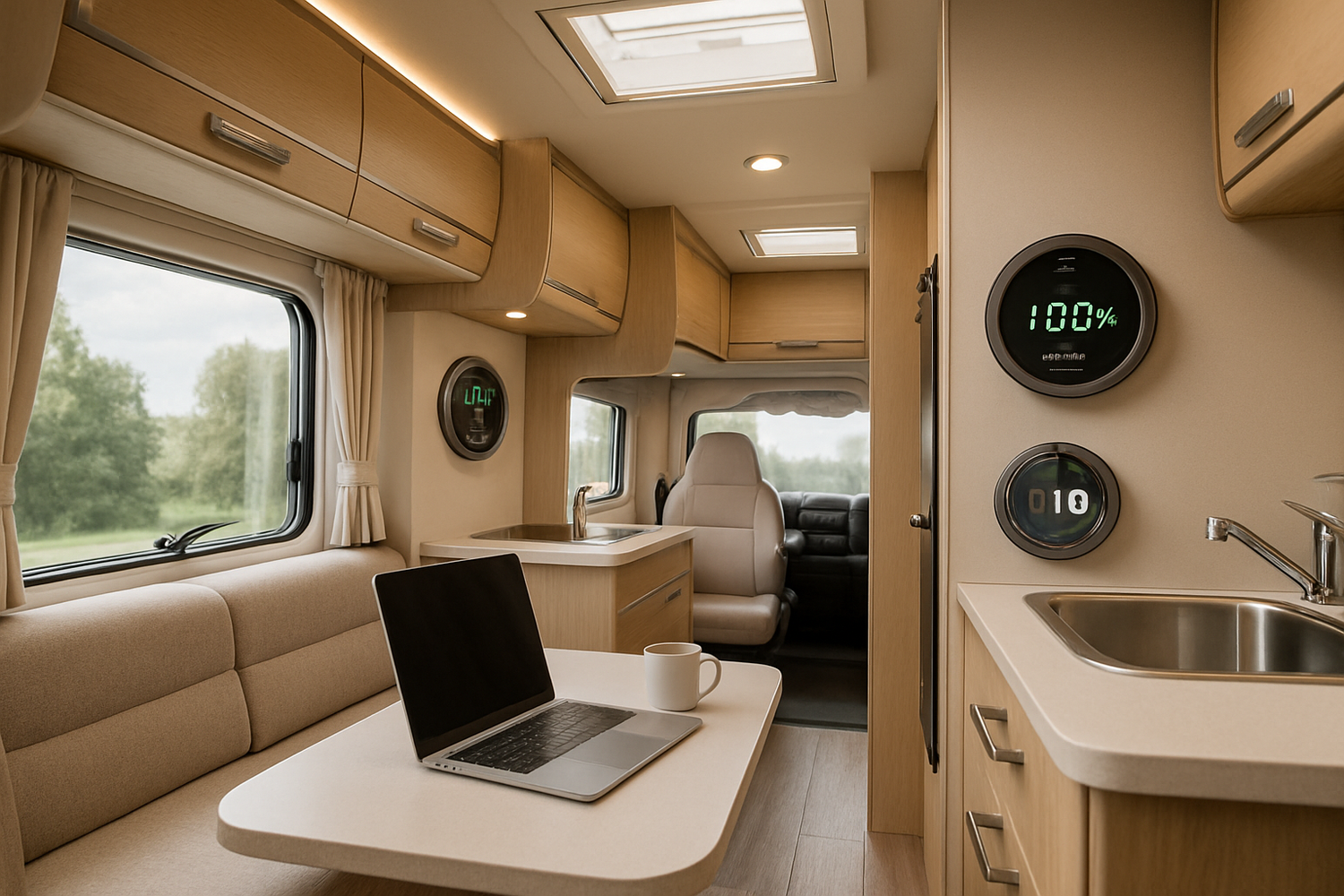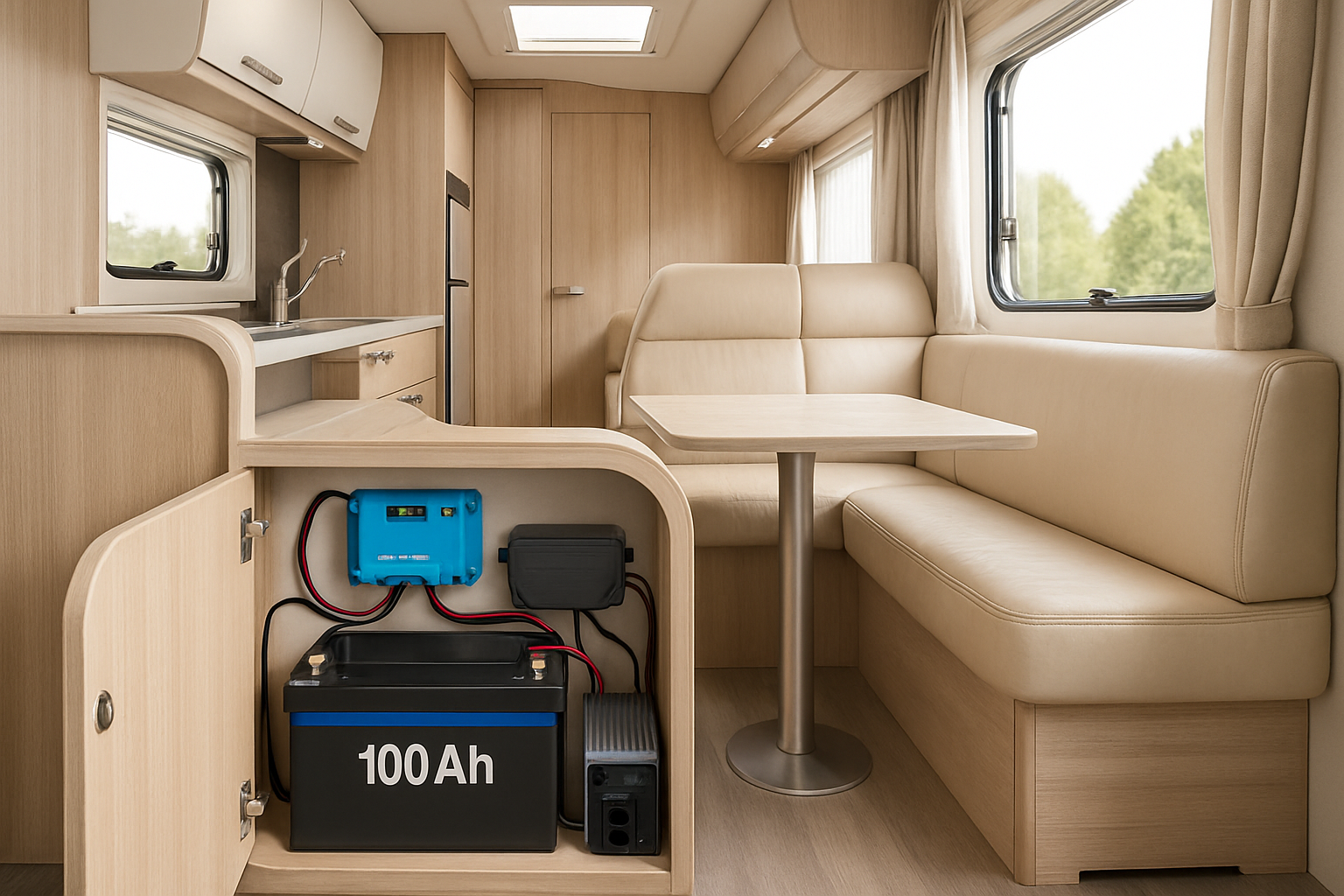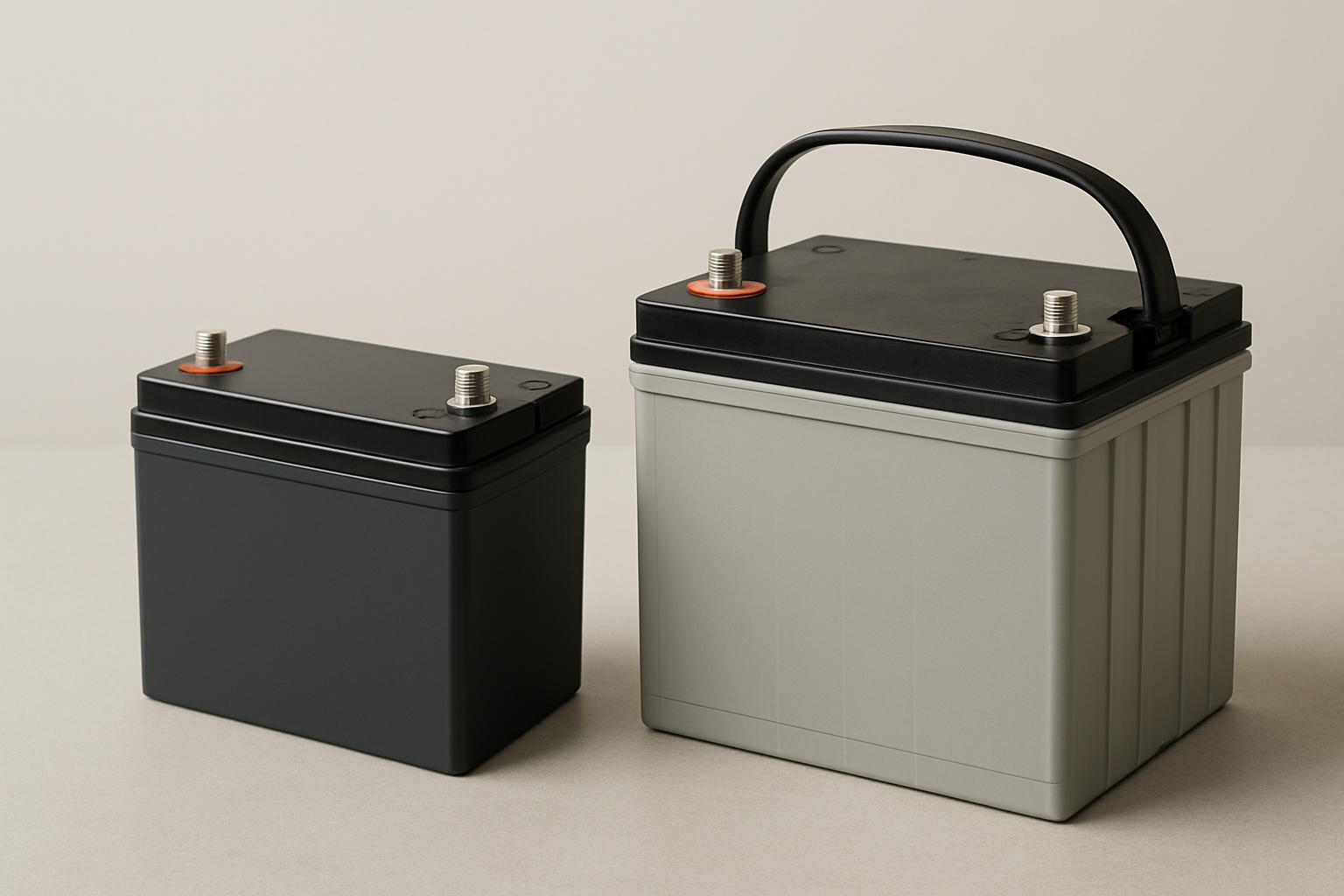For RV enthusiasts, the promise of the open road is the promise of freedom. But true freedom requires reliable, independent power. Upgrading your RV's battery system is a significant step toward that goal, and the 200ah lithium battery stands out as a powerful contender. While its initial cost is higher than traditional options, a closer look reveals a compelling case for its long-term value and superior performance. This analysis breaks down the costs, benefits, and practical considerations to help you determine if this investment is right for your rig.
Understanding the Core Benefits of a 200ah Lithium Battery
The advantages of a 200ah lithium iron phosphate (LiFePO4) battery extend far beyond just holding a charge. They represent a fundamental upgrade in how you manage and use power on the road, offering tangible improvements in capacity, lifespan, and efficiency.
Superior Energy Density and Usable Capacity
One of the most significant differences between lithium and traditional lead-acid batteries is the usable capacity, often defined by the Depth of Discharge (DoD). Lead-acid batteries should only be discharged to about 50% of their rated capacity to avoid damage and shortened lifespan. This means a 200ah lead-acid battery effectively provides only 100ah of usable power. In contrast, a 200ah lithium battery can be safely discharged to 90-100%, giving you nearly the full 200ah of power. In practical terms, you get almost double the energy from a lithium battery of the same rating. As noted in a report from the International Renewable Energy Agency (IRENA), a high depth of discharge tolerance is essential for systems that support renewable energy integration.
Extended Lifespan and Cycle Count
The longevity of LiFePO4 batteries is a key factor in their value proposition. A high-quality 200ah lithium battery can deliver between 3,000 and 5,000 charge cycles, whereas a typical lead-acid battery offers only 300 to 500 cycles. This translates to a lifespan of 10 years or more for lithium, compared to just 3-5 years for lead-acid alternatives. While the upfront cost is higher, the need to replace lead-acid batteries multiple times often makes lithium the more economical choice over the long term.
Performance and Efficiency Gains
Lithium batteries provide a more consistent and efficient power supply. They maintain a stable voltage output throughout the discharge cycle, which is safer for sensitive electronics. They also charge significantly faster than lead-acid batteries, a major advantage when relying on limited sunlight for RV solar charging. With higher charge and discharge efficiency (around 95%), less energy is wasted during use. Furthermore, they are substantially lighter, reducing the overall weight of your rig and potentially improving fuel efficiency.
Sizing Your System: Is 200ah the Right Capacity?
A 200ah lithium battery offers a substantial power reserve, but it's important to confirm if this capacity aligns with your specific needs. The best way to do this is by evaluating your daily energy consumption.
Conducting Your Personal Energy Audit
An energy audit is a systematic review of your power usage. Start by listing all the electrical devices in your RV and their power consumption in watts. Then, estimate how many hours you use each device per day. Multiply the watts by the hours to get the daily watt-hours (Wh) for each appliance. Summing these figures gives you your total daily energy consumption. A 12V 200ah lithium battery holds approximately 2400Wh of usable energy (200Ah x 12V). This calculation will tell you if a 200ah battery can comfortably meet your daily demands.
| Appliance | Power (Watts) | Daily Use (Hours) | Daily Energy (Watt-hours) |
|---|---|---|---|
| LED Lights (x4) | 20 | 4 | 80 |
| Refrigerator (DC) | 50 | 8 (cycle) | 400 |
| Water Pump | 60 | 0.5 | 30 |
| Laptop Charging | 65 | 3 | 195 |
| Phone Charging (x2) | 10 | 2 | 20 |
| Fan | 30 | 5 | 150 |
| Total Daily Consumption | 875 Wh |
Scenarios Where 200ah Excels
A 200ah lithium battery is particularly well-suited for certain travel styles. If you are a full-time RVer or frequently take extended off-grid trips, this capacity provides the energy security you need. It's also ideal for powering higher-demand appliances like microwaves, coffee makers, or even short bursts from an air conditioner. For those with a robust RV solar charging system (400 watts or more), a 200ah battery provides ample storage to capture and utilize the sun's energy effectively.
When 200ah Might Be an Overkill
For casual weekend campers with minimal power needs—perhaps just running lights and charging phones—a 200ah battery might be more capacity than necessary. In such cases, a smaller 100ah lithium battery could be a more cost-effective solution. It's also important to consider the physical space and budget available for your system upgrade.
A Financial Breakdown: Cost vs. Long-Term Value
The primary hesitation for many RV owners is the initial price of a 200ah lithium battery. However, viewing it as a long-term investment rather than a simple purchase reveals a different financial picture.
The Upfront Cost Analysis
There is no denying that lithium batteries have a higher upfront cost than their lead-acid counterparts. A single 200ah LiFePO4 battery can cost significantly more than two 100ah lead-acid batteries that would be needed to provide a similar *rated* capacity. However, this comparison is misleading because it ignores usable capacity and lifespan.
Calculating the Total Cost of Ownership (TCO)
The true value emerges when you calculate the total cost of ownership over a decade. A 200ah lithium battery can last for 10-15 years, while you might need to replace an equivalent lead-acid bank three or four times in the same period. When factoring in replacement costs, the lifetime cost of lithium is often lower. The rising investment in lithium development, as highlighted in the IEA's World Energy Investment 2023 report, signals the industry's shift toward this more durable technology.
| Feature | 200ah LiFePO4 Battery | 400ah AGM Lead-Acid (Equivalent Usable Capacity) |
|---|---|---|
| Upfront Cost | Higher | Lower |
| Cycle Life | 3,000 - 5,000+ | 300 - 700 |
| Usable Capacity (DoD) | ~190Ah (95%) | ~200Ah (50%) |
| Weight | ~50 lbs | ~250 lbs |
| Replacements in 10 Yrs | 0 | 2-3 |
| Lifetime Cost | Lower | Higher |
Disclaimer: This information is for illustrative purposes only and does not constitute financial advice. Costs are estimates and can vary based on brand and market conditions.
Integrating a 200ah Battery with Your RV Solar Charging System
To maximize the benefits of a 200ah lithium battery, it must be properly integrated with the rest of your RV's electrical system, especially your solar components.
Component Compatibility
A successful upgrade requires ensuring your existing components are compatible with lithium technology. Your solar charge controller is a critical piece. An MPPT (Maximum Power Point Tracking) controller with a specific LiFePO4 charging profile is highly recommended for optimal efficiency. Likewise, your inverter/charger and converter should have settings that align with lithium's charging requirements to prevent damage and ensure longevity. A quality battery will have an integrated Battery Management System (BMS) to protect against issues like overcharging and extreme temperatures.
Optimizing Solar Panel Sizing
To effectively charge a 200ah battery, you need an adequate solar array. A general guideline is to have between 400W and 800W of solar panels. This range ensures you can replenish the battery's capacity even on days with less-than-perfect sunlight. For a deeper dive into matching your battery with solar panels and understanding performance metrics, the Ultimate Reference for Solar Storage Performance offers detailed calculations and insights.
A Final Perspective on Your Investment
Choosing a 200ah lithium battery is a significant decision that hinges on your travel habits, power needs, and financial outlook. While the initial expense is considerable, the superior performance, extended lifespan, and lower total cost of ownership present a strong argument for its value. It's an investment in reliability, convenience, and the freedom to explore further without being tethered to shore power. For the serious RVer, it's an upgrade that pays dividends in energy independence and peace of mind for years to come.
Frequently Asked Questions
Can I replace my lead-acid batteries directly with a 200ah lithium battery?
While often possible, it is crucial to verify that your system's components are compatible. Your power converter, inverter, and solar charge controller must have settings suitable for LiFePO4 batteries to ensure safe and optimal performance. Some older systems may require an upgrade to these components.
How long will a 200ah lithium battery power my RV?
This depends entirely on your power consumption. A 12V 200ah LiFePO4 battery provides approximately 2400 watt-hours of usable energy. To determine how long it will last, divide 2400 by the total wattage of the appliances you are running simultaneously.
Do lithium batteries require maintenance?
LiFePO4 batteries are virtually maintenance-free. They do not require watering or equalization charges like flooded lead-acid batteries. An integrated Battery Management System (BMS) automatically protects the cells and ensures their health.
Are 200ah lithium batteries safe for RVs?
Lithium Iron Phosphate (LiFePO4) is recognized as one of the safest and most stable lithium battery chemistries. When purchased from a reputable manufacturer, these batteries include a sophisticated BMS that protects against overcharging, over-discharging, and extreme temperatures, making them a very safe option for RV applications.





Leave a comment
All comments are moderated before being published.
This site is protected by hCaptcha and the hCaptcha Privacy Policy and Terms of Service apply.